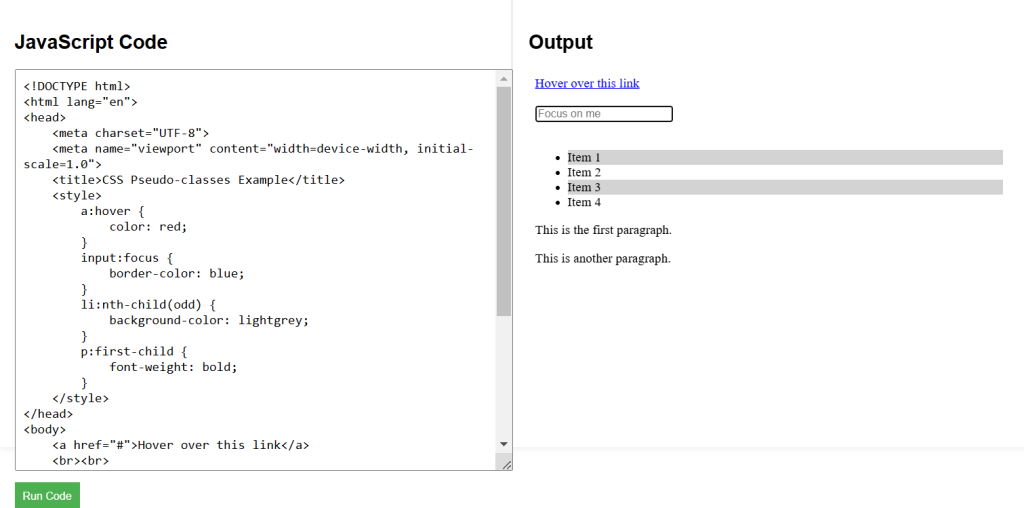Pseudo-classes apply styles to elements based on their state or position in the document tree.
:Hover
The :hover pseudo-class applies styles when the user hovers over an element.
a:hover {
color: red;
}:Focus
The :focus pseudo-class applies styles when an element receives focus, such as when a user clicks on an input field.
input:focus {
border-color: blue;
}:Nth-child(n)
The :nth-child(n) pseudo-class applies styles to the nth child of a parent element
li:nth-child(odd) {
background-color: lightgrey;
}:First-child
The :first-child pseudo-class applies styles to the first child of a parent element.
p:first-child {
font-weight: bold;
}CSS Pseudo-classes Example Code
<!DOCTYPE html>
<html lang="en">
<head>
<meta charset="UTF-8">
<meta name="viewport" content="width=device-width, initial-scale=1.0">
<title>CSS Pseudo-classes Example</title>
<style>
a:hover {
color: red;
}
input:focus {
border-color: blue;
}
li:nth-child(odd) {
background-color: lightgrey;
}
p:first-child {
font-weight: bold;
}
</style>
</head>
<body>
<a href="#">Hover over this link</a>
<br><br>
<input type="text" placeholder="Focus on me">
<br><br>
<ul>
<li>Item 1</li>
<li>Item 2</li>
<li>Item 3</li>
<li>Item 4</li>
</ul>
<p>This is the first paragraph.</p>
<p>This is another paragraph.</p>
</body>
</html>


